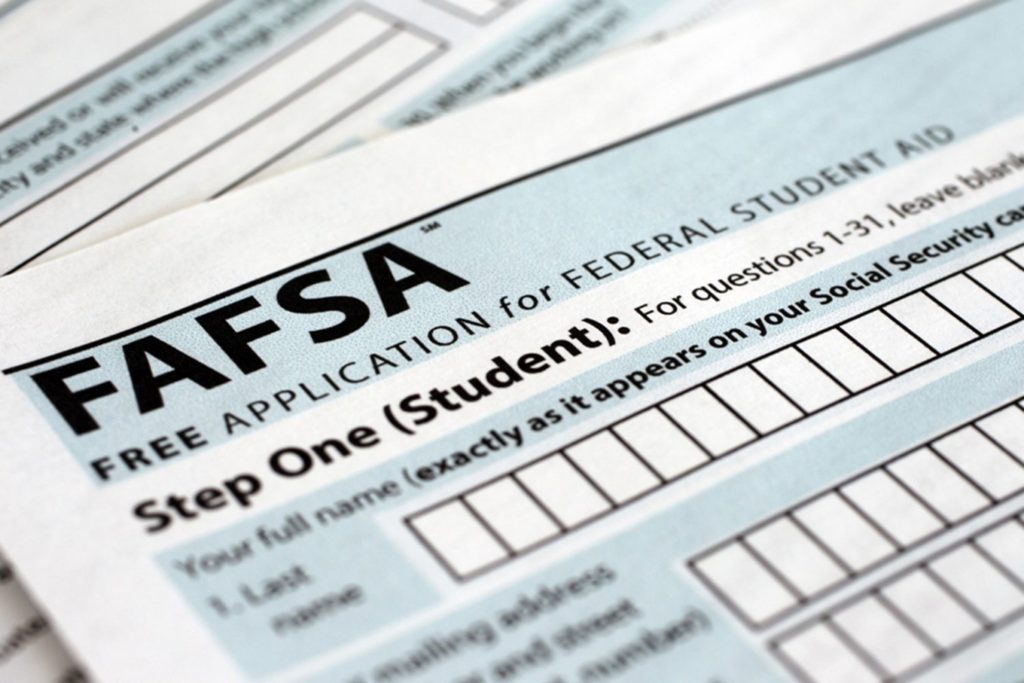5 Tips to Understanding Your Financial Aid Award Letter
What Is a Financial Aid Award Notification Letter?
A financial aid Award Notification Letter is the letter sent by colleges or universities to students who have applied for financial aid notifying them of their financial aid award. Financial aid award letters are sent in the winter to students who completed the early FAFSA in the fall.

All financial aid award letters are different and the packages they come in all contain additional reference materials you will need to review to successfully complete the financial aid award process.
When the package arrives, please start by looking for the following on each letter:
Have a question? Contact a Financial Aid Counselor Today!
Types of Financial Aid
Scholarships
Your financial aid scholarship award is generally contingent upon completing a required number of credit hours, attaining a minimum GPA and/or performing a certain amount of service. If you are awarded a performance scholarship, such as for music, the requirements may also involve performing a certain number of events. Your scholarship award letter will detail any requirements for maintaining the scholarship.
You’ll want to verify whether or not the scholarship is renewable and if so, whether or not the renewal criteria (like those referenced earlier) are doable for you.
New university scholarship recipients must submit a signed “Scholarships Terms and Conditions” form to the Office of Financial Aid before funds will be applied to their student account. Be sure to read the scholarship letter carefully to identify any paperwork you must complete in order for funds to be distributed.
State and Federal Educational Grants
There are several different types of financial aid grants you may receive, such as the Pell Grant or Supplemental Educational Opportunity Grant (SEOG). There are also state grants such as Texas Equalization Grant (TEG) and Texas Public Educational Grant (TPEG). Or you may receive a grant from your university.
Grant financial aid is based on financial need and is free money. Most federal grants for college do not require an additional application, but some – such as the Texas Equalization Grant (TEG) – do. If additional steps are necessary, check the reference materials within your financial aid awards package or grant award letter for the guidance.
Work Study
How does federal work study financial aid work? Work study awards operate differently at every school. Just because you’ve been offered a work-study award doesn’t obligate you to accept it, nor does it guarantee you will receive it. After all, you may find a better job off-campus. There are a lot of details to research upon receiving this award. For instance:
- Is the school’s financial aid office going to help you find a job?
- How will the funds be paid to you?
- Is there a limit to the number of hours you can work?
- Can you apply the funds towards your student account each term?
The University of St. Thomas posts employment opportunities on the website, so you might start by checking there. If all else fails, there’s always the old-fashioned technique of visiting different departments on campus and building relationships. In either case, be sure to start early in the semester. The best and most interesting jobs go fast.
Student Loans
Degree-seeking U.S. citizens who have filed the FAFSA are likely to be offered a Federal Direct Stafford Loan from the government. Incoming freshmen can borrow up to $5,500 for their first year. The amount goes up every year after that. The student loan offer is preliminary. To receive it, you will need to complete an application at studentloans.gov where you will e-sign a promissory note. While on the site, first-time borrowers are also required to complete entrance loan counseling so you understand what is being offered and what your obligations are under the law. Find out more information about Stafford loans.
Tuition and Fees
Somewhere on your federal student financial aid award letter, the university will provide a complete cost of attendance. This will include tuition, fees, housing, books and supplies, transportation and miscellaneous costs.
Accepting or Declining Financial Aid
You can accept, reduce, or decline financial aid online via your myStThom account. Simply log on and select “Student Self Service.” Under the “Finances” section, click on “Accept/Decline Awards.”
Certain awards (for example, Federal Direct Parent PLUS loans, etc.) cannot be accepted via your myStThom account. Be sure to follow the instructions for those types of aid.
When deciding whether or not to accept a loan or other types of financial aid, you will first want to determine which costs apply to you. If you plan to live at home, you can immediately disregard housing costs from the total estimated cost of attendance. Perhaps you worked a summer job in high school and will be using that money to pay for your books. Or maybe your parents are still paying for your car insurance, gas and/or cellphone.
Consider all of these factors when assessing your actual costs. Once you arrive at the number, subtract the financial aid you will receive to determine your net cost. By looking at this “bottom line” number, you can determine the affordability of each school you’re considering.
Learn more about financial aid awards here.